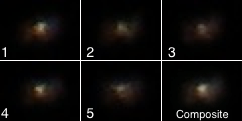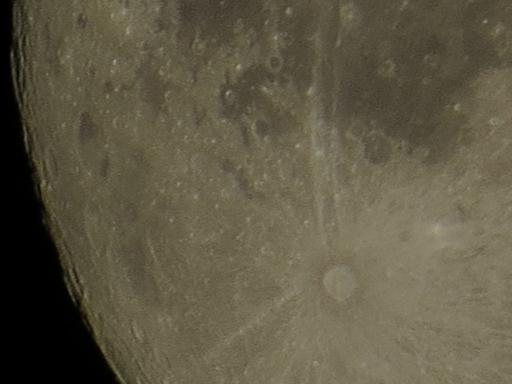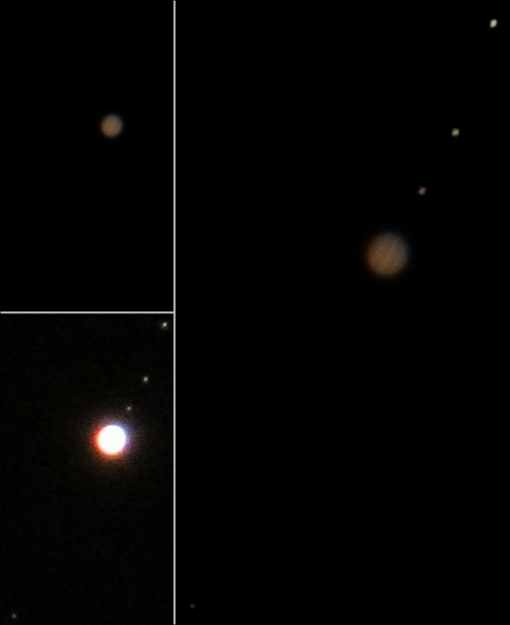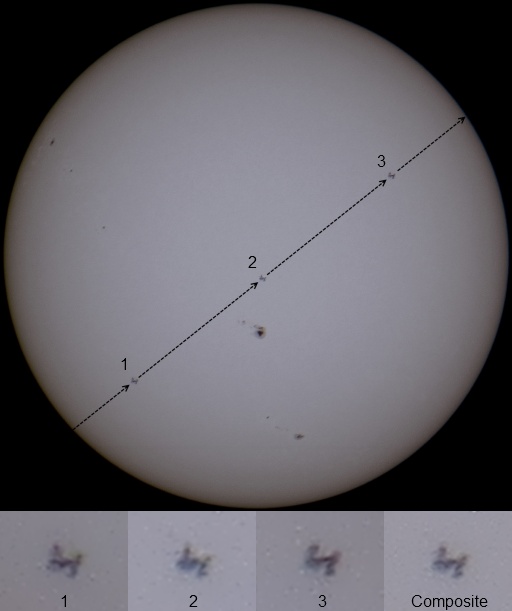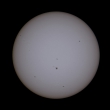Jupiter with Baader M&S filter on
Posted by Wesley on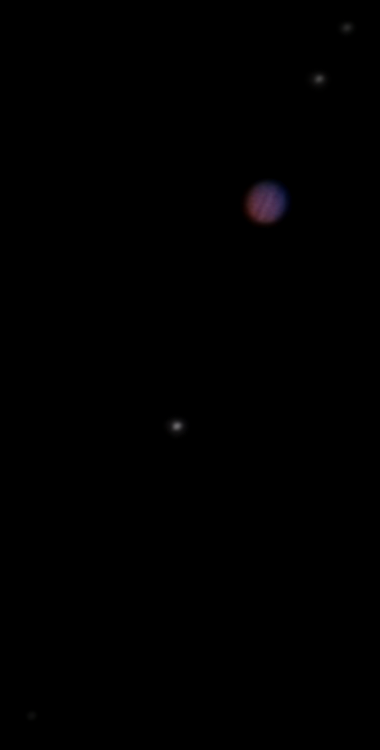
From top right to bottom left: Europa, Io, Jupiter, Ganymede (bright), Callisto (faint)
Two weeks ago, I bought a Baader Moon & Skyglow filter that supposedly cuts light pollution and enhances contrast of the planets. This was attached to my Canon SX50 HS camera using a 58mm-28mm step-down ring. You can see how this looks like on the left. The filter is relatively inexpensive as far as telescope filters go, but it's still quite a bit of money, so I got a 1.25" one (fits like 28.5mm) instead of getting a 2" one (fits like 48mm) which cost almost twice as much. The 0.5mm difference between the step-down ring and the filter meant that it would not screw on completely, but it works okay.
At dawn today, I tested out its performance by taking the photos of the Jovian system. While it did noticeably cut the background light pollution, the contrast of Jupiter received a modest boost, as compared to my previous non-filtered shots. One thing to note is that, by CalSky's calculations, the Great Red Spot was supposed to be facing the Earth, so I would be able to see it on the lower right area of Jupiter's surface. But apparently, SX50 HS isn't quite powerful enough to bring that detail out clearly at the current distance. A couple of folks suggest that it might be the darker area at the right edge of the lower band - further sessions are needed to verify this. Jupiter should look bigger every day until when it's about 30% bigger on January next year, so that's my best hope for now.
Jupiter: 1200mm (w/ 2x DTC*) - ISO 80 - 1/80s - 22 photos stacked
Moons: 1200mm (w/ 2x DTC) - ISO 1250 - 1/10s - 117 photos stacked
*DTC = Digital Teleconverter. Stacked using RegiStax 6.1.0.8.
Time: 2013-09-04 04:30 KST
Location: Suwon, Korea

